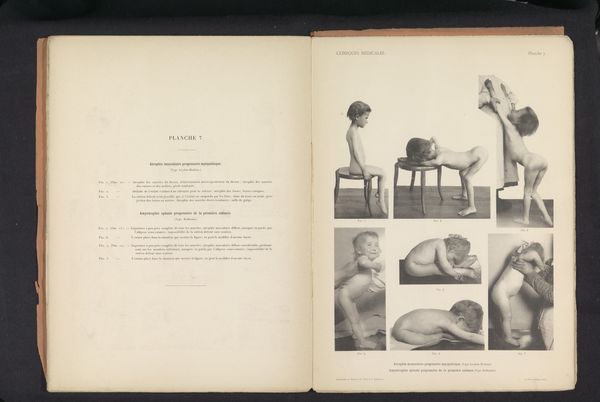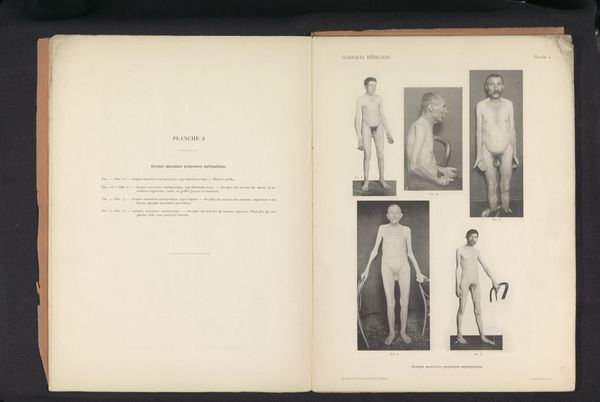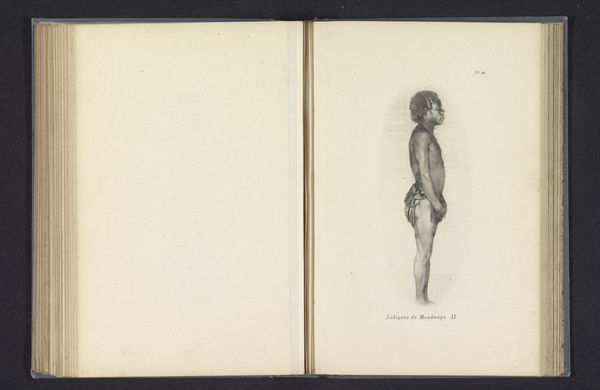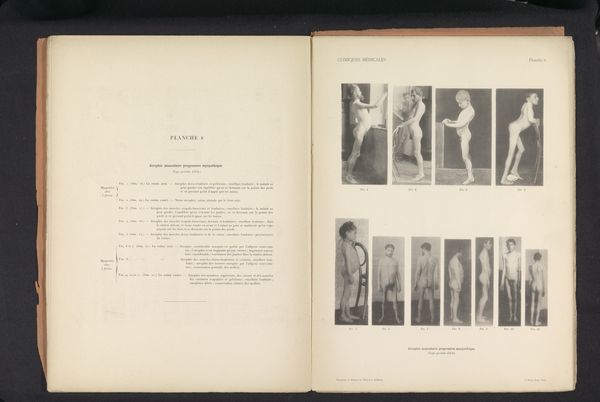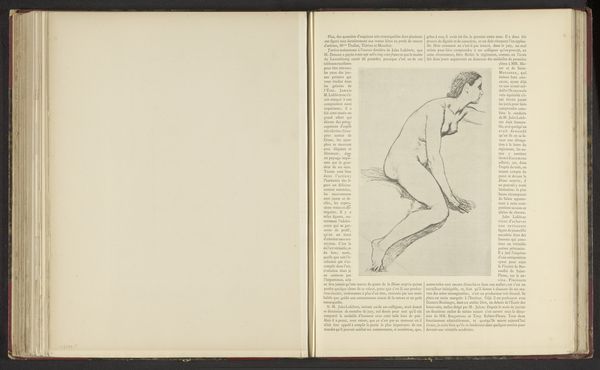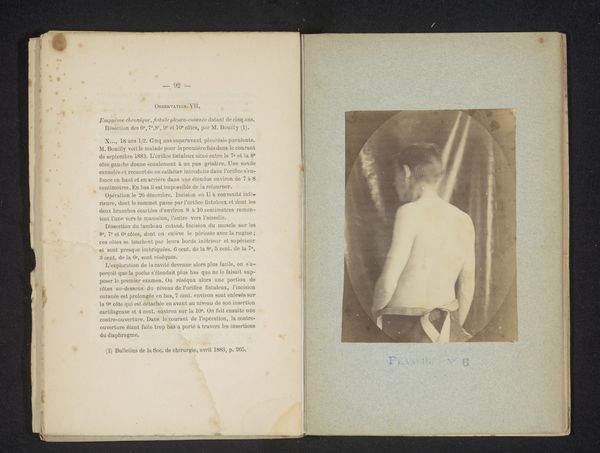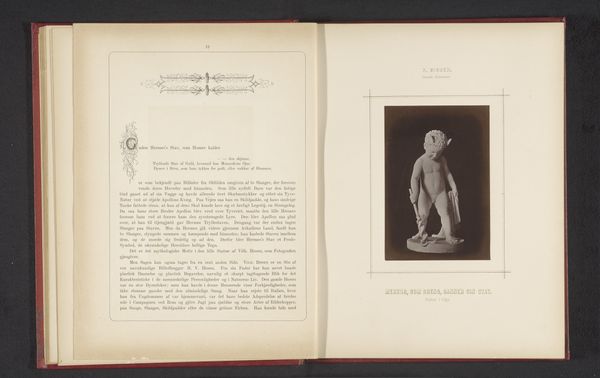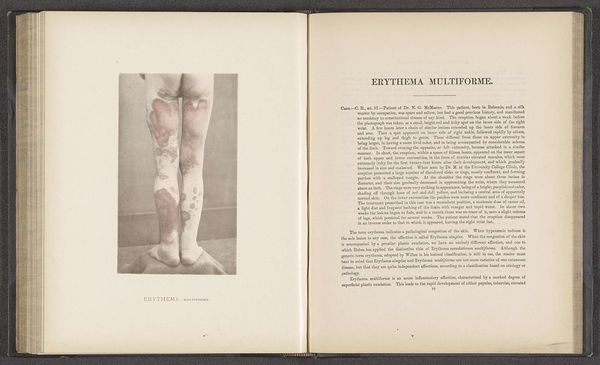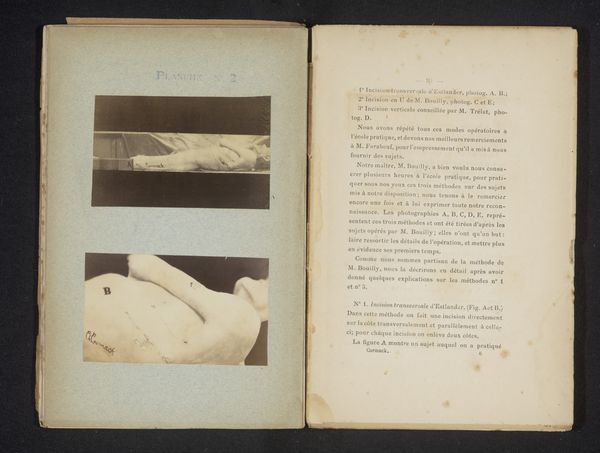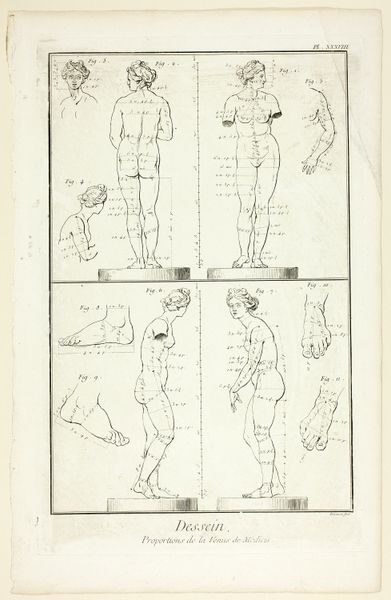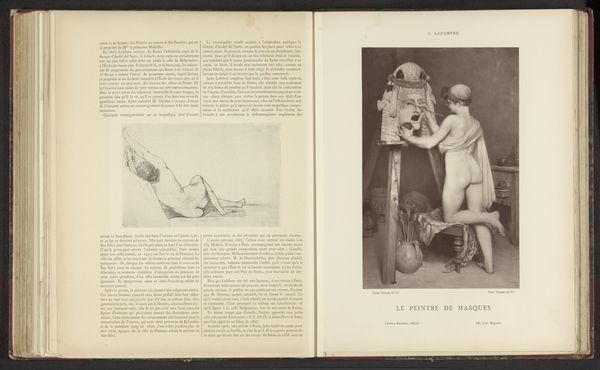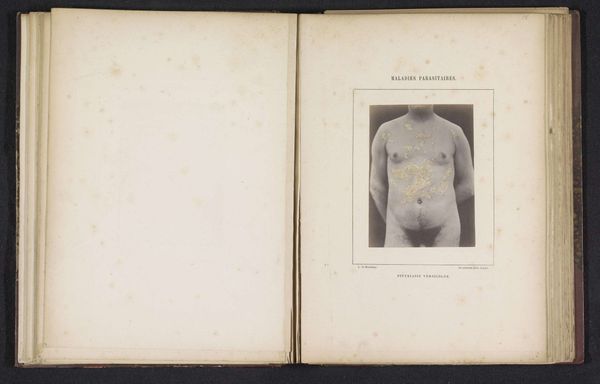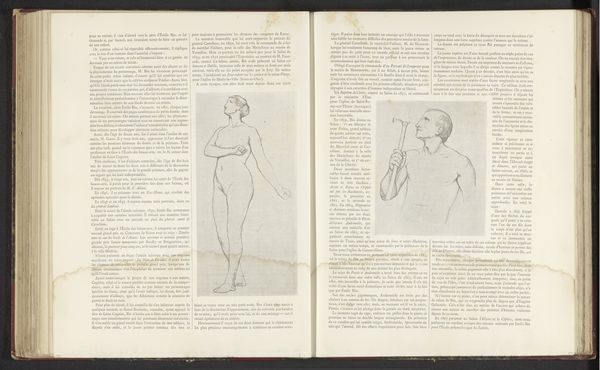
print, photography
# print
#
photography
#
academic-art
#
nude
Dimensions: height 377 mm, width 295 mm
Copyright: Rijks Museum: Open Domain
Curator: This image presents 'Vier aanzichten van een onbekende man met musculaire atrofie,' which translates to "Four Views of an Unknown Man with Muscular Atrophy." Created anonymously sometime before 1901, it's a print that incorporates photography. What are your initial thoughts? Editor: It’s unsettling. The composition, laid out like a clinical study, combined with the vulnerability of the subject... evokes a strong sense of discomfort. It's raw. Curator: It's compelling how the anonymous photographer, perhaps unwittingly, uses visual tropes—nudity, specific poses—associated with both classical sculpture and medical illustration. The nude form is a potent symbol throughout art history, representing ideals, but here, it’s juxtaposed with medical scrutiny. What echoes do you discern? Editor: I find that the clinical setting almost weaponizes this aesthetic history of the nude, reframing cultural ideals of beauty through a scientific and potentially dehumanizing lens. Was the photographer and institution intending to create something sympathetic? Or an unemotional clinical study? What societal attitudes might have been prevalent at this time towards individuals with such conditions? Curator: Those questions get at the very heart of understanding its cultural role. The stark presentation, removed from context, does raise concerns about objectification. The symbolism of displaying the nude form in this manner shifts the power dynamic, highlighting how society often positions individuals with physical differences. We’ve seen how such images have both documented medical advancements and also reinforced stigma. Editor: Indeed, and how institutions choose to display such work today speaks volumes. Context is everything. Without careful consideration, are we potentially perpetuating the very attitudes that created such clinical distance in the first place? The image also calls to mind issues of representation within medical spaces throughout history. Who decides whose stories are told and how? Curator: Precisely. Analyzing its place in cultural and institutional history sheds light on these crucial power dynamics. It highlights both the advancements of medical understanding and the potential pitfalls of objectification inherent in certain representational strategies. I would say this photo embodies the complexity inherent when medicine and culture collide. Editor: It is a striking reminder that even with scientific progress, ethical considerations and historical awareness are paramount in how we present and interpret visual imagery, particularly concerning the human body. It will certainly continue to stimulate relevant cultural analysis.
Comments
No comments
Be the first to comment and join the conversation on the ultimate creative platform.
